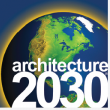This document provides an overview of three types of embodied carbon reduction targets, and also examples of corporate and other voluntary commitments to reduce embodied carbon. More information about opportunities for addressing embodied carbon with policy can be found in the Carbon Leadership Forum’s Owner Toolkit.
Version: May 3, 2021
Target-setting is key to success and momentum
Investor, developer, building owner, and tenant policies are essential to reducing embodied carbon by spurring action before a project begins when the largest range of solutions are available. As a project progresses, the range of options is reduced. Setting net-zero embodied carbon targets early in a project (preferably before it begins) is therefore key to maximizing reductions and minimizing costs.
When it comes to targeting net-zero embodied carbon, there are three relevant types of targets:
- Company or organization-wide targets;
- Project-level targets; and
- Material-level (procurement) targets.
Organization-wide targets are most effective at accelerating action through aligning teams across an organization that may otherwise be siloed, such as sustainability, real estate, and procurement. Project and procurement targets support broader goals and ensure that reductions opportunities are followed through the value chain and communicated as a priority across the large number of stakeholders across a typical project.
Public sustainability commitments can also help maintain momentum on climate action within a company while signaling demand for low carbon solutions, inspiring a “race to the top” among organizations competing to be the first to net-zero.
Embodied Carbon and Scope 3 Emissions
Embodied carbon refers to the greenhouse gas emissions associated with the manufacturing, transportation, use, and disposal of building materials used in construction.
The Greenhouse Gas Protocol Corporate Accounting and Reporting Standard splits GHG emissions into three scopes:
- Scope 1 emissions are from a company’s operations that are under a facility’s direct control, e.g., on-site fuel combustion;
- Scope 2 emissions are from usage of electricity, steam, heat and/or cooling purchased from third parties; and
- Scope 3 emissions are upstream and downstream value chain emissions, including upstream supply chain emissions from purchased products, transport emissions, and business travel and downstream emissions from transport of products, usage of sold products and product disposal.
Upfront or “cradle-to-gate” embodied carbon refers to embodied carbon impacts up to the point of purchasing, and are therefore accounted as scope 3 emissions (see Figure 1). The primary categories of scope 3 emissions associated with embodied carbon are (1) purchased goods and services and (2) capital goods, or assets that are used to produce goods or services.

Figure 1. Building product life cycle stages included in scope 1, 2, and 3 greenhouse gas accounting, as described by the Greenhouse Gas Protocol Corporate Value Chain (Scope 3) Reporting Standard. Cradle-to-gate emissions (including extraction, transportation, and production) as well as end-of-life waste disposal and recycling emissions are included in scope 3 emissions. Other life cycle stages, such as construction and demolition, are not clearly attributable to a category.

